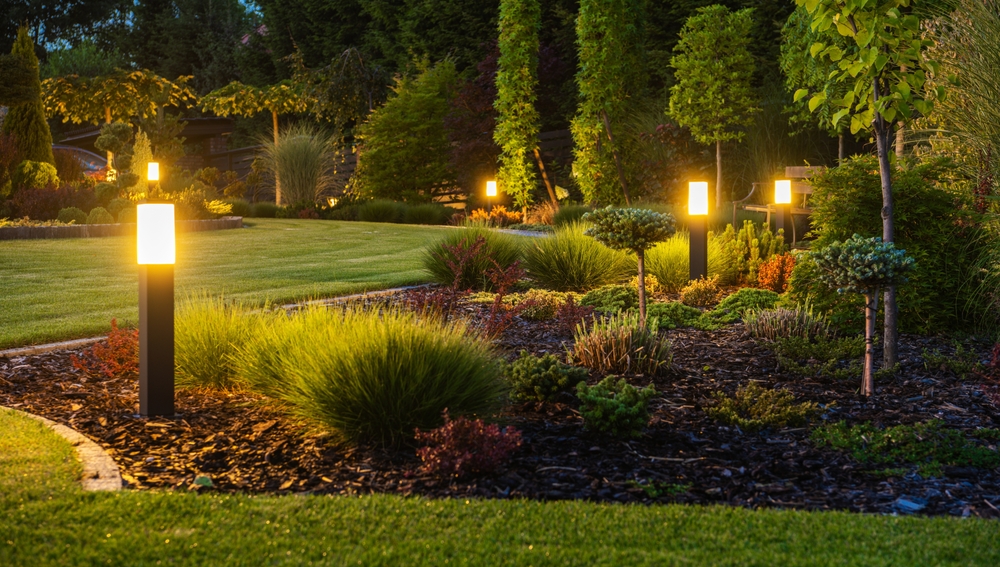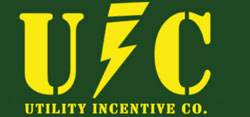The Environmental Impact of Switching to LED Landscape Lighting

With growing awareness about environmental sustainability, many homeowners and businesses are making conscious efforts to reduce their ecological footprint. One area often overlooked in sustainable choices is outdoor landscape lighting. Landscape lighting plays a significant role in the curb appeal, security, and ambiance of a property, but traditional lighting methods often consume high levels of energy and require frequent maintenance and replacements, leading to substantial waste and emissions. Fortunately, LED (Light Emitting Diode) lighting technology offers a sustainable alternative. By switching to LED landscape lighting, you can enjoy lower energy costs, reduced waste, and a smaller environmental impact.
In this article, we’ll explore the environmental impact of switching to LED landscape lighting, with a focus on waste reduction, energy efficiency, and other sustainable lighting solutions.
The Rise of LED Lighting: A Sustainable Shift
The move toward LED lighting has transformed the lighting industry. Originally developed for indicator lights and small electronic devices, LED technology has evolved significantly in recent years, making it suitable for everything from indoor illumination to expansive outdoor landscapes. LEDs are now recognized for their durability, energy efficiency, and low environmental impact. This makes them an ideal choice for landscape lighting.
What Makes LED Lighting Environmentally Friendly?
LED lights are distinct from traditional lighting options in several key ways. Incandescent and halogen bulbs, for example, waste a large portion of the energy they consume, converting it into heat rather than light. LEDs, on the other hand, use a semiconductor to produce light efficiently, meaning that nearly all the energy consumed is used for illumination.
LED lights also contain no toxic chemicals like mercury, which is often found in CFL (compact fluorescent) bulbs, and they are fully recyclable. This reduces the environmental toll of production, disposal, and the eventual breakdown of materials.
LED Landscape Lighting and Waste Reduction
One of the most immediate environmental benefits of switching to LED landscape lighting is waste reduction. Traditional bulbs have a much shorter lifespan compared to LEDs, resulting in frequent replacements that contribute to waste. In contrast, LEDs have a significantly longer lifespan, lasting up to 50,000 hours or more. This durability reduces the number of replacements required and, consequently, decreases the volume of waste sent to landfills.
How Does Waste Reduction Impact the Environment?
Reducing waste in lighting is not only about cutting down on the number of discarded bulbs. Each step in the lifecycle of a traditional bulb—from manufacturing to transportation, installation, and disposal—requires resources and generates emissions. When you switch to LED landscape lighting, you help minimize the demand for raw materials needed for production, as fewer bulbs are required over time. This translates into fewer resources extracted from the earth and reduced pollution associated with manufacturing processes.
In addition to less frequent replacements, LED lighting waste reduction also stems from the absence of hazardous substances. Unlike some other lighting types, LED bulbs contain no lead or mercury, so they don’t pose a risk of leaching harmful chemicals into the soil or water systems when they are eventually discarded.
Energy-Efficient Landscape Lighting: Saving Power and Reducing Emissions
Another critical benefit of LED landscape lighting is its energy efficiency. LED lights use up to 75% less energy than incandescent bulbs, meaning that properties with extensive outdoor lighting setups can significantly reduce their energy consumption by making the switch.
Why Is Energy Efficiency Important?
Energy efficiency plays a crucial role in environmental sustainability. The electricity used in traditional lighting systems often comes from fossil fuels, which emit greenhouse gases and contribute to climate change. By reducing energy consumption, LED lighting helps to decrease greenhouse gas emissions and supports a cleaner, more sustainable environment.
For outdoor lighting, LEDs are especially beneficial because they can be programmed to work with energy-saving technologies like motion sensors and timers. With these features, landscape lighting can be programmed to turn on only when necessary, such as in the evening or when movement is detected. This reduces unnecessary energy use and lowers your property’s carbon footprint.
LED Lighting and Renewable Energy Compatibility
Another benefit of LED lighting is its compatibility with renewable energy sources. Since LEDs consume minimal power, they are ideal for integration with solar panels and other renewable energy sources. By combining LED landscape lighting with solar technology, you can achieve nearly net-zero energy use for your outdoor lighting, dramatically reducing your reliance on non-renewable energy.
Reduced Light Pollution: Preserving Night Skies and Ecosystems
Light pollution is an often-overlooked environmental issue associated with outdoor lighting. Excessive or misdirected light disrupts natural cycles, affecting ecosystems, wildlife, and even human health. LED landscape lighting offers a more focused and controlled lighting solution, helping reduce light pollution and its negative impacts.
The Role of LED Landscape Lighting in Reducing Light Pollution
LED lights can be directed more precisely than traditional lights, allowing you to focus light where it’s needed without spilling it into unwanted areas. This control is beneficial in reducing light trespass, which can negatively affect nocturnal animals and disrupt their habitats. Wildlife often relies on natural darkness to hunt, hide, or rest, and improperly directed lights can interfere with these behaviors, causing stress and population decline among certain species.
LED landscape lighting can also be used in lower-intensity options that reduce glare while still providing adequate illumination for outdoor spaces. This helps protect the night sky, allowing you to enjoy your outdoor areas without disturbing nearby wildlife or contributing to urban light pollution.
Cost Savings and Long-Term Environmental Benefits
In addition to environmental benefits, switching to LED landscape lighting offers considerable cost savings. The energy-efficient landscape lighting from LEDs requires significantly less electricity, which leads to lower utility bills. Although the upfront cost of LED fixtures can be higher than traditional lighting, the reduction in energy use and the longer lifespan of LEDs provide long-term savings that offset the initial investment.
Reduced Maintenance and Replacement Costs
LED lights require very little maintenance compared to other lighting types. Since they last much longer, the need for frequent bulb replacements is nearly eliminated, reducing both maintenance costs and the inconvenience of regular upkeep. This reduced maintenance translates to fewer resources spent on replacements and fewer visits to the store, further reducing your environmental impact.
Lower Carbon Footprint Over Time
Each step in maintaining traditional lighting, from producing replacement bulbs to the energy used in manufacturing and transportation, has an associated carbon footprint. By using long-lasting LED landscape lights, you can reduce your contribution to these emissions and support a more sustainable lighting solution. Over time, the collective impact of energy-efficient landscape lighting can be substantial, especially in communities where widespread adoption reduces the demand on local energy grids.
Choosing Sustainable Lighting Solutions for Your Landscape
Selecting the right lighting for your landscape involves more than just choosing the brightest or most cost-effective option. Sustainable lighting solutions focus on minimizing environmental impact, conserving resources, and protecting local ecosystems. LED lighting systems fulfill these requirements by offering energy efficiency, waste reduction, and compatibility with renewable energy sources.
Tips for Maximizing Sustainability with LED Landscape Lighting
- Use Motion Sensors and Timers: Reduce unnecessary lighting by programming your landscape lights to turn on only when needed.
- Opt for Solar-Powered LEDs: If possible, consider solar-powered LED fixtures for an entirely off-grid lighting solution.
- Select Low-Intensity LEDs: Avoid excessive brightness that contributes to light pollution. Choose warm-toned, lower-intensity options for a softer, more eco-friendly ambiance.
- Recycle Old Bulbs Responsibly: When replacing older, traditional bulbs with LEDs, dispose of them properly by recycling or using facilities that accept hazardous waste.
Why Switching to LED Landscape Lighting Matters
Switching to LED landscape lighting is a simple yet effective way to reduce your environmental impact, save energy, and decrease waste. With long lifespans, energy-efficient performance, and the ability to work seamlessly with renewable energy sources, LEDs represent a significant step forward in sustainable lighting solutions. Additionally, the precise control over LED lighting helps minimize light pollution, preserving local ecosystems and enhancing your outdoor spaces.
As more homeowners and businesses transition to energy-efficient landscape lighting, the cumulative effect on environmental sustainability will become even more pronounced. Making the switch to LED lights is not just a wise choice for your budget; it’s a valuable investment in a healthier planet. By opting for LED landscape lighting, you’re taking a stand for sustainability, creating a safer environment for wildlife, and paving the way for a brighter, cleaner future.
Need a Lighting Company in California?
Since 2003, we here at Utility Incentive Corp. have been the premier provider of energy efficient electrical services in San Diego and the surrounding areas. We are a privately owned and operated business with 20 years of experience. Our friendly and professional staff work in conjunction with other businesses to provide them with better solutions at little to no cost to property owners.
We focus primarily on relamping and retrofitting T12 lamps and ballasts to “Energy Star” T-8 lamps and “flicker free” ballasts. Our other services include a free initial consultation, energy audit, and utility application. Give us a call today to see why we have installed and replaced over 175,000 fixtures across California!
